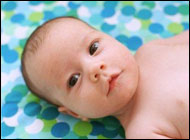Children Who Live with Smokers Have More Respiratory Complications During Surgery
Children are especially vulnerable to the effects of secondhand smoking, both because they are small and still growing and because they’re often a “captive audience” for tobacco smoke. Now, researchers identify another problem: a greater risk for respiratory complications during outpatient surgical procedures.
Dwight Jones, MD, of Children’s Hospital Boston and Neil Bhattacharyya, MD, from Brigham and Women’s Hospital followed 405 children, 168 of whom came from households with smokers. The children were having day surgical procedures at Children’s, ranging from drainage of middle-ear fluid to circumcision to hernia repair. All had general anesthesia and received oxygen through a face mask.
Children who lived with smokers had a higher incidence of respiratory problems during surgery than those from nonsmoking households: excessive mucus secretion (38 percent vs. 8 percent), breath-holding (15 percent vs. 6 percent), constriction of the larynx or bronchial tubes that potentially could impair breathing (29 percent vs. 5 percent), and actual airway obstruction (29 percent vs. 11 percent). Respiratory problems were similarly increased in the recovery room, but to a lesser extent. 
“It was in the wakeup period in the operating room that they did the worst,” says Jones, a pediatric otolaryngologist at Children’s. “We had a harder time waking up children coming out from anesthesia because of choking, gagging and secretions.”
Some children who lived with smokers required additional airway support, including bronchodilators and supplementary oxygen, and had to stay in the hospital overnight. With the exception of actual airway obstruction, the more cigarettes smoked per day in the home, the more severe the children’s respiratory complications during surgery.
The study results, published in the July 1 issue of the journal Otolaryngology-Head and Neck Surgery, suggest that children exposed to secondhand smoke may require more attention to their airways during surgery, particularly if they are receiving ventilation by face mask, the usual method for minor surgical procedures and in patients with heart or lung disease. Instead of face-mask ventilation, anesthesiologists may now want to consider placing an endotracheal tube to protect children against airway constriction and prevent aspiration of mucus, Jones says.
“Anesthesiologists need to have a higher level of suspicion when taking a patient history, and should find out whether the parents smoke or if there’s any tobacco smoked in the home,” Jones says. “Based on our findings, they might be more likely to tell parents that their child might have more problems during wakeup from anesthesia and might need to be admitted overnight, rather than go home the same day.”
Children’s Hospital Boston
Revision date: July 5, 2011
Last revised: by Tatiana Kuznetsova, D.M.D.